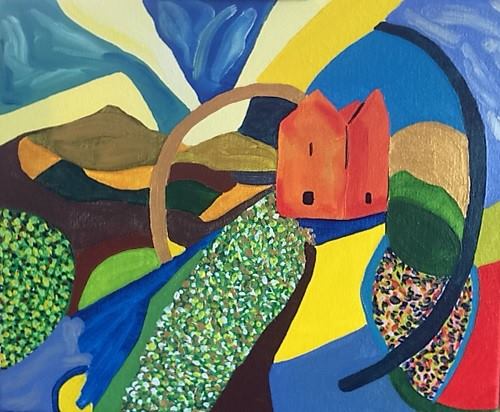
Along typically narrow, winding Somerset lanes, the entrance way can be found to the National Trust owned Dovecote in Bruton. A secluded petite hill holding aloft a structure akin to an architectural sculpture. Despite uncertainty about when the Dovecote was constructed (with the general consensus being between the 15th and 17th centuries) the tower could be mistaken for a modern art work with its lack of roof and aesthetic geometry; more suitable perhaps for the nearby Hauser and Wirth art gallery. It was this unique beauty that struck me on first viewing it. An abandoned, ruined tower that somehow seemed to be inviting. The sunshine lit up the limestone to a cool ochre and the brilliantly white clouds glided around it, reminiscent of the doves’ feathers that once would have floated inside the structure itself.
Originally a watch tower, the imposition of doves and pigeons didn’t occur until around 1780. The interior still contains 200 pigeon holes, with six tiers of nest boxes, however, there could have once been four times as many holes as this. The Dovecote was situated within the deer park of Bruton Abbey, where the monks adapted the building from its origin of a gabled Tudor tower. After the dissolution of the monasteries, beginning in the late 1530’s, the estate including the Dovecote came into possession of the Berkley family. The National Trust acquired the Dovecote in 1915, from Sir Henry Hugh Arthur Hoare of the Hoare Baronets. The Hoare family’s seat is the beautiful Stourhead estate in Wiltshire. In 1961, the tower was listed as a Grade II building. Throughout its history, the Dovecote has witnessed seismic change from being a refuge for the monks of Bruton Abbey to the practical use of farming doves and pigeons for produce. This change from refuge to practicality is now changing once more as the Dovecote begins to represent a new perspective in which to see the Somerset landscape. This is most striking on driving into Bruton, where the tower can be seen high on the green horizon, appearing like an other-worldly portal, mysterious enough to rival Glastonbury Tor.
As I walked up the buttercup stained hill, to admire the Dovecote and the kaleidoscope of fields around Bruton, I experienced this historic site as a centre to the tides of human change around it. The history, the construction of the building, and the surrounding landscape harmonies’ perfectly to create a special corner of Somerset. It is no surprise that Bruton is a hive for artistic activity: this environment is endlessly inspiring. Being a painter I found inspiration from the form of the Dovecote and its roots within the landscape. This relationship between the history of the Dovecote and the natural landscape inspired me to create this painting (below). My use of abstract, colourful forms distorts the monument and the landscape, but in so doing heightens the intensity of perception I experienced on visiting the site. At first the Dovecote seems to be a simple structure with a straightforward purpose, yet its complex history, combined with its understated beauty, creates a scene of pure spectacle worth visiting on many a day.

By Louise Wheeler

